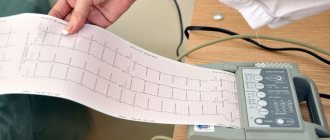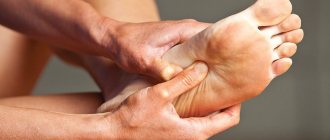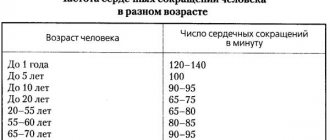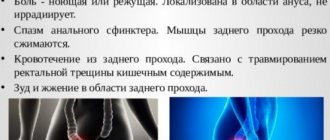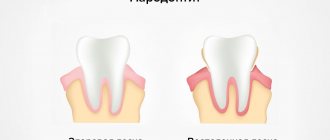- Types of Heart Diseases
- Diagnosis and treatment
- Our doctors
One of the most common reasons why patients go to medical care is short-term pain in the heart. But sometimes they last for hours and can be felt for days on end. Unpleasant sensations intensify when a person breathes, changes position, or moves the upper shoulder girdle. The pain syndrome worsens during exercise, as well as during eating and even at rest.
Most people are familiar with the feeling of discomfort directly in the thoracic region, or on the left, that is, where the heart is located. This is worrying. Ignoring it simply won’t work. After all, when the heart pierces, the pain tends to press, burn, ache, pull, bake and even pierce. Sometimes it is felt only in a separate area or spreads directly along the sternum, radiating to the cervical or shoulder region, in the abdominal cavity or under the shoulder blade, causing terrible discomfort.
There are a huge number of reasons for this symptom: myocardial infarction, ischemia, rheumatic heart disease. But most often the source of pain is neuroses, diseases of the ribs, diseases of the spine, disruption of the gastrointestinal tract and other pathological processes. During the examination, a medical specialist will determine the cause of the identified syndrome.
Common causes of stabbing pain
During my medical practice, I have met hundreds of patients with complaints of tingling in the heart, and they, of course, always cause suspicion. But, fortunately for everyone, dangerous cardiovascular pathologies are manifested by pain of a different nature - burning, baking, pressing, bursting. Among such life-threatening diseases, I can highlight myocardial infarction, unstable angina, dissecting aortic aneurysm and some others. Nevertheless, all stabbing sensations in the projection of the heart can be divided into two large groups.
Heartfelt
Cardialgia of a stabbing nature, emanating directly from the heart, is not so common, but can pose a significant danger to life:
- inflammatory processes - dry pericarditis, myocarditis;
- some rhythm disturbances - extrasystole;
- mitral valve prolapse - sagging of its valves during contraction into the cavity of the left atrium;
- hypertensive crisis and its complications.
I also want to note that the intensity of the pain may increase with deep breaths, strong coughing or sneezing.
Extracardiac
Due to the densely branched system of nerve endings, pain in the heart area can radiate from the spine and gastrointestinal tract. They can also occur during mental disorders and during attacks of dry, strong, hacking cough due to lung diseases.
In my medical practice, stabbing pain in the left half of the chest occurred with the following pathologies:
- hernias of the thoracic spine - sac-like protrusions that occur when a spinal disc ruptures;
- intercostal neuralgia - inflammation of the nerve endings running between the ribs;
- radiculitis is an inflammatory process affecting the nerve roots;
- neurosis and neurotic conditions are a group of diseases associated with disorders in the psycho-emotional sphere, more often diagnosed in the young population;
- vegetative-vascular dystonia - dysfunction of the autonomic nervous system, which may cause slight tingling in the heart area;
- osteochondrosis of the thoracic spine - a complex of degenerative-dystrophic changes in the intervertebral discs (read about how to distinguish the heart pain of this pathology here);
- Shingles is a viral disease characterized by the appearance of a herpetic rash.
The main features of extracardiac pain are their intensification when turning the body, raising the arms and the lack of effect from taking Nitroglycerin or Molsidomin.
How is diagnosis carried out in patients who often experience heart pain?
An ECG is the most important initial diagnostic procedure for frequent chest pain. Abnormalities detected by an ECG help doctors determine the type of treatment needed. Abnormalities on the ECG also help determine where the heart muscle has been damaged. If several ECGs recorded over a period of several hours are completely normal, doctors consider a heart attack unlikely.
Measuring levels of certain substances (called cardiac markers) in the blood also helps doctors diagnose abnormalities. These substances are usually found in the heart muscle, but only enter the bloodstream when it is damaged or dead. The most commonly measured are heart muscle proteins called troponin I and troponin T, and an enzyme called creatine kinase. Blood levels rise within 6 hours of a heart attack and remain elevated for several days. Levels of cardiac markers are usually measured upon admission to the hospital and at 6 to 12 hour intervals over the next 24 hours.
When ECG and cardiac markers do not provide sufficient information, echocardiography can be performed. It may show decreased mobility of part of the left ventricular wall. This suggests damage due to a heart attack. Other tests are used to determine whether a person needs additional treatment or is likely to have heart problems. For example, a person may have to wear a Holter monitor, which records the heart's electrical activity over a 24-hour period. This procedure allows doctors to determine whether a person has an abnormal heart rhythm (arrhythmia) or episodes of poor blood flow without symptoms (silent ischemia).
An exercise test (electrocardiography done during exercise) before or shortly after discharge can help determine how well a person is doing after the attack and whether ischemia continues.
During an exercise tolerance test (stress test), a person walks on a treadmill at an accelerating pace. A blood pressure cuff monitors your blood pressure throughout the procedure. The video monitor displays the pulse and ECG. The results help determine the presence of coronary heart disease.
How to determine the source
In each specific case, the most important thing is to detect the source of pain. I do not recommend trying to figure out this problem on your own; it is better to seek advice from a competent specialist. Pain syndrome in the left half of the chest almost always requires additional diagnostic procedures.
5 Signs of Heart Disease
The presence of a symptom from the list below should make you want to visit a doctor. This is especially true for people who have a history of increased body weight, high blood cholesterol, arterial hypertension and diabetes mellitus. The clinical manifestations of heart disease are listed in order from most serious to least dangerous:
- Feeling of discomfort or burning, burning, bursting pain in the sternum. They are capable of spreading to the left half of the body, the lower jaw, and less often to the right shoulder or forearm. Often the pain syndrome is provoked by physical exertion or severe psycho-emotional shock.
- Episodes of loss of consciousness that occur spontaneously or when lifting heavy objects. These manifestations may be associated with Morganié-Adams-Stokes syndrome - fainting caused by a sharp decrease in cardiac output.
- Shortness of breath is a feeling of lack of air. Its cause must always be differentiated from diseases of the bronchopulmonary system.
- Swelling of the legs, worsening towards the end of the day. They start from the feet and move to the legs, thighs, perineum and can spread to the entire body.
- Fast fatiguability. It should especially alert young people. If you experience severe weakness when performing simple activities (for example, climbing 1-2 floors), check your heart immediately.
Surveys
When patients contact me with complaints of stabbing pain in the heart area, I first conduct a detailed survey. It is important to clarify the psycho-emotional status of the patient and the presence of “overlapping” diseases. The next step is to measure blood pressure. Next, I carry out palpation (palpation), during which special attention should be paid to the intercostal spaces. Among the general clinical methods of examination, auscultation can also help, as a result of which various rhythm disturbances are detected. Stitching, cutting sensations in the heart area can occur during extrasystole - untimely contractions.
To identify cardiac pathology, I can prescribe the following laboratory tests and instrumental methods:
- lipid profile;
- electrocardiogram;
- echocardiography;
- load tests - bicycle ergometry, treadmill;
- X-ray, CT or MRI of the thoracic spine;
- ultrasound examination of internal organs.
Diagnostics
The examination of the patient begins with a standard examination by a cardiologist. The doctor conducts auscultation of the heart to identify signs of organic pathology - rough noises, deafness, splitting or accentuation of tones. Since it is quite difficult to find out the cause of tingling during a clinical examination, laboratory and instrumental diagnostic methods are used:
- Electrocardiography.
Based on the results of the study, the doctor accurately determines the presence of arrhythmia and its type. Violation of repolarization and a decrease in the voltage of the teeth indicates myocarditis or coronary myocardial diseases. If there are difficulties in diagnosis, daily ECG monitoring is recommended. - Ultrasound of the heart.
Echocardiography is effective in identifying organic cardiac pathology that causes tingling in the heart. According to echocardiography, the thickness and uniformity of contraction of the heart wall, ejection fraction, and the condition of the pericardial cavity are assessed. Blood flow is measured using Doppler ultrasound. - Radiography.
A standard chest x-ray is necessary for a preliminary assessment of the size and shape of the heart and visualization of the contours of the great vessels. For a more detailed study of anatomical structures, an MRI is performed. - Blood tests.
Inflammatory damage to heart tissue is manifested by leukocytosis and increased ESR in the hemogram. An increase in acute phase proteins is characteristic. In coronary diseases, an increase in the levels of total cholesterol and LDL fraction is typical. If necessary, myocardial markers are measured.
If cardiac neurosis or peripheral nerve damage is suspected, the patient is referred to a neurologist. In addition to assessing the neurological status, the specialist may prescribe EEG, electroneuromyography, CT and MRI. For psychogenic neuroses, a psychiatrist should participate in the diagnostic search. Signs of articular pathology are an indication for consultation with a rheumatologist.
How to relieve pain and what to do next
If your heart is racing at home, then first you need to stop worrying. Remember that cardialgia of this nature is rarely associated with cardiovascular pathology. If the medicine cabinet contains sedatives (valerian tablets, motherwort, Tricardin drops, etc.), then their use is acceptable.
The next step is a visit to the doctor - ignoring heart pain is unacceptable. Only a specialist will be able to make a differential diagnosis of pain occurring in the chest.
For osteochondrosis or hernia of the thoracic spine, the use of non-steroidal anti-inflammatory drugs as first aid is permissible:
- "Nimesulide";
- "Diclofenac";
- "Ibuprofen";
- "Meloxicam";
Causes of true heart pain
True heart pain occurs due to malnutrition of a certain area of the heart muscle. This is possible with:
- spasm of the coronary vessels, their impaired tone, incorrect reaction (hypertension, vegetative-vascular dystonia);
- inflammation of the myocardium (myocarditis);
- the occurrence of ischemia from a pronounced atherosclerotic process or thrombosis;
- myocardial dystrophy and cardiosclerosis;
- heart defects;
- chronic heart failure.
Ischemic pain is most pronounced in acute myocardial infarction. They are intense, retrosternal, last up to a day or more, and are accompanied by pallor and a drop in blood pressure.
Angina pectoris often depends on physical or emotional stress. Substernal pressing pain radiates to the left, to the shoulder, shoulder blade, jaw.
Other heart diseases cause long-term, intermittent, dull or stabbing pain with varying degrees of radiation. Accompanied by arrhythmia, increased blood pressure, body temperature, dizziness, and general weakness.
Women often complain with complaints during menopausal changes in the body. Here the pain is caused by a lack of sex hormones. They are provoked by anxiety and poor nutrition. Accompanied by many vivid emotions: fear of death, suffocation (without increased breathing), darkening of the eyes, interruptions in rhythm, sweating. In men, menopause also matters, but it usually occurs later and coincides with the development of atherosclerosis and true ischemia.
Expert advice
- Buy a device for measuring blood pressure and check the readings if stabbing pain occurs. You can read about which hypertension pills are the most effective here.
- To clarify the disease that provoked the pain syndrome, you can contact general practitioners, cardiologists and neurologists.
- Examine the thoracic spine for osteochondrosis. In the vast majority of cases, it is he who is the source of pain.
First aid for an angina attack
If an angina attack occurs, you must follow the instructions received from your attending physician or (if there were no such instructions) follow the algorithm:
- Note the time of onset of the attack.
- Measure blood pressure, heart rate and pulse.
- Sit (preferably in a chair with armrests) or lie in bed with the head of the bed raised.
- Provide fresh air (free your neck, open a window).
- Take acetylsalicylic acid (aspirin 0.25 g), chew the tablet and swallow.
You should not take acetylsalicylic acid (aspirin) if you are intolerant to it (allergic reactions) and have already taken it that day, as well as if there is a clear exacerbation of gastric and duodenal ulcers.
6. Take 0.5 mg of nitroglycerin. If in the form of a tablet, put it under the tongue and dissolve; if in the form of a capsule, bite it, do not swallow; if in the form of a spray, inhale (inject) one dose under the tongue without inhaling.
If, after taking nitroglycerin, severe weakness, sweating, shortness of breath, or a severe headache appears, then you need to lie down, raise your legs (on a bolster, pillow, etc.), drink one glass of water and then do not take nitroglycerin.
You should not take nitroglycerin if you have low blood pressure, severe weakness, sweating, severe headache, dizziness, acute impairment of vision, speech or coordination of movements.
7. If the pain has completely disappeared and the condition has improved after taking aspirin and 1 dose of nitroglycerin after 5 minutes, limit physical activity and discuss further treatment with your doctor.
8. If the pain persists for more than 10-15 minutes, you must take nitroglycerin a second time and urgently call an ambulance!
ATTENTION ! If aspirin or nitroglycerin is not available and the pain persists for more than 5 minutes, call an ambulance immediately!
9. If pain persists even after taking the second dose of nitroglycerin after 10 minutes, you need to take nitroglycerin a third time. Wait for an ambulance.
Clinical case
A 24-year-old man came to me with complaints of stabbing pain in the heart area, aggravated by coughing and sudden turns of the body. The deterioration of the condition has been observed over the last 3 days. Objectively: cardiac activity is rhythmic on auscultation, blood pressure is 110/70 mm Hg. Art., heart rate 72, t= 36.6 °C. Upon palpation in the area of the IV intercostal space, a sharp increase in pain was noted. When turning the body to the painful side, the intensity of the pain syndrome also increased. The diagnosis was made: “Intercostal neuralgia.” The patient received a course of non-steroidal anti-inflammatory drugs (Diclofenac) for 7 days. After this, he noted a significant improvement in his general condition and the disappearance of stabbing pain in the heart area.
Treatment
Help before diagnosis
Tingling in the heart is usually provoked by psycho-emotional factors, so it is advisable to use light herbal sedatives. To get rid of signs of neurosis, it is necessary to normalize your daily routine and diet, increase physical activity and time spent in the fresh air. If a person is diagnosed with coronary artery disease, to eliminate the stabbing pain, you need to take fast-acting vasodilators prescribed by your doctor.
Conservative therapy
Tingling rarely reaches such intensity that there is a threat of painful shock and emergency measures are required. The main thing in treatment is the elimination of the etiological factor. After successful treatment of the existing disease, the tingling in the heart disappears. The drug treatment regimen is selected individually according to the type of pathological process. The following drugs are used:
- Sedatives
. Medicines that act on the central nervous system are effective for cardioneuroses. They quickly stabilize the psycho-emotional background and eliminate increased anxiety. To eliminate neurotic disorders, their long-term use is required. - Muscle relaxants
. The drugs are widely recommended to combat pain caused by neuralgia and osteochondrosis. They affect peripheral nerve endings and reduce painful muscle tension. - Antiarrhythmic medications
. To normalize heart rhythm, cardiologists use 4 classes of medications. Medicines are selected taking into account the nature and severity of the arrhythmia, the presence of concomitant diseases of the cardiovascular system. - Anti-inflammatory drugs
. Medicines from the group of nonsteroidal anti-inflammatory drugs are indicated for myocarditis and other infectious processes, joint diseases. If therapy is insufficiently effective, glucocorticoids are prescribed.
For the targeted action of medications for neuralgia and joint damage, the electrophoresis technique is effective. To reduce tingling and pain of neurological origin, physiotherapeutic treatment is carried out - laser therapy, UHF, magnetic therapy. For neuroses, individual and group sessions with a psychotherapist are required.
When to call an ambulance?
When there is no confidence in the correctness of the measures taken, you should not overestimate your knowledge; it is better to call an ambulance.
A special attitude has been formed towards people in a drunken state. They are not trusted even when complaining of severe heart pain. Do not leave such a person alone, although he may be very unpleasant. Call an ambulance and make sure the car has arrived.
If, despite help, it hurts severely for 15-20 minutes, rhythm disturbances or dizziness appear, you need to call an ambulance. Prolonged pain cannot be tolerated. The ambulance has ECG machines. It is possible to conduct an initial diagnosis to exclude acute infarction. The equipment includes painkillers.
The correct course of action: after the assistance provided, the patient felt improvement, but it is still necessary to undergo a full examination at the clinic, without waiting for repeated attacks. There is no need to joke with your heart.
